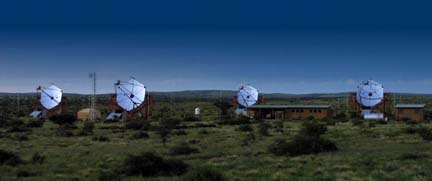"This is the highest energy at which any periodic signal has been observed, nearly 100,000 times higher than previously known."
- H.E.S.S. Observatory, Namibia


November 27, 2006 Gamsberg, Namibia - Astrophysicists operating the High Energy Stereoscopic System (H.E.S.S.) gamma-ray telescopes in Namibia have announced the discovery of periodic emission of very-high-energy gamma rays from a binary system. The object which is responsible for this emission is a double system called LS 5039, comprised of a massive blue star twenty times heavier than the Sun.
Click here to subscribe and get instant access to read this report.
Click here to check your existing subscription status.
Existing members, login below:
© 1998 - 2025 by Linda Moulton Howe.
All Rights Reserved.

